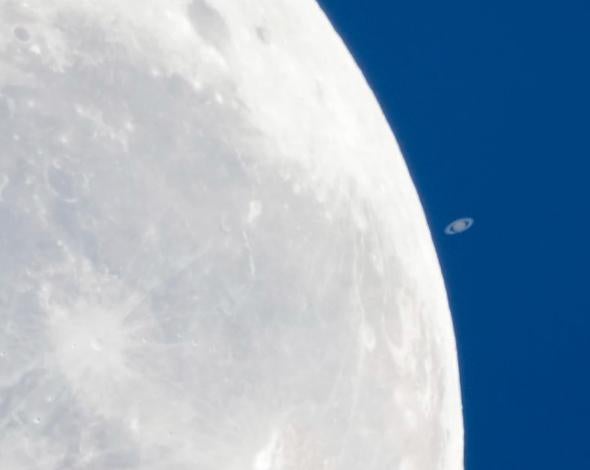On Feb. 22, 2014, the Moon ate Saturn.
Well, kinda. From our point of view here on Earth, the orbit of the Moon swept it directly in between us and Saturn, blocking the ringed planet from our view. This kind of event is called an occultation, and they’re pretty cool to behold.
That video was shot by photographer Colin Legg, who took it from Perth, Australia, just before sunrise. Legg has a fantastic eye for astrophotography; I’ve featured his work on the blog so many times I can’t even link to it all, so just go here and click around to get an eyeful.
Occultations are amazing. I’ve seen a few myself, and they’re always fun. While I wouldn’t say they’re rare as a class of events—there’s usually one or two a year visible from a given site—seeing the Moon pass in front of a bright planet doesn’t happen terribly often.
That’s because the solar system isn’t as flat as you might think. Most of the planets orbit in the same plane, so that from the side the solar system does look pretty flat. Saturn’s orbit is tilted relative to Earth’s by about 2.5°, which is a fairly narrow angle. But the Moon is only about 0.5° in size in our sky, which is pretty small. Not only that, the Moon’s orbit is tilted to ours by a hair over 5°, so things have to align just so to get Saturn and the Moon together in the sky. Usually they miss each other by a few degrees.
But this time it worked out well for us—well, some of us. Those of us in the U.S. missed it because our part of the Earth was facing the wrong way when it happened. Happily for Legg, though, Australia was in the right position to catch it.
If you want to know what’s next for lunar occultations, you can go to Universe Today, which has compiled a list of 101 astronomical events for the year. I may try to catch the March 10/11 event where the Moon blocks the somewhat bright star Lambda Geminorum. That’ll be a kick to see with binoculars, and it happens at 8:30 or so at night in Boulder, Colo., so I won’t have to get up at crack o’dawn o’clock to see it.
I’ll add that there is actually a group dedicated to observing such things: IOTA, or the International Occultation Timing Association. While you may not have the bug that bad, they do have pretty good lists of stuff to keep your eyes open for. Give it a shot!
Tip o’ the lens cap to Maik Thomas.
